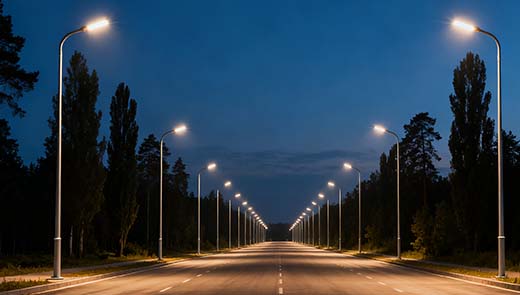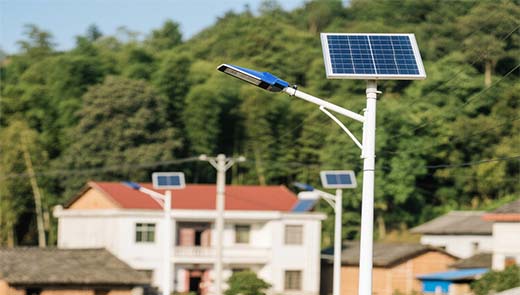The Importance of Choosing the Right AB Adhesive for Solar Road Studs
In modern road safety infrastructure, solar road studs have become an essential device for ensuring road safety at night and in adverse weather conditions, thanks to their energy-efficient, environmentally friendly, and self-illuminating properties. However, what is less well-known is that the performance and lifespan of a high-quality solar road stud largely depend on the AB adhesive used in its production process. So, why is choosing the right AB adhesive so crucial for solar road studs? This article will delve into this question.
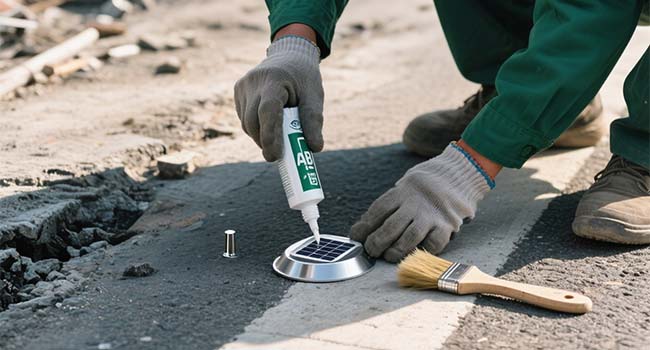
AB Adhesive Basics Explained
Definition and Composition of AB Adhesive
AB adhesive, short for two-component adhesive, consists of two key components: A and B. Component A is the adhesive base, commonly made of thermosetting polymers such as epoxy resin, polyurethane, or acrylic, which determine the adhesive's bonding strength and mechanical properties. Component B is the curing agent. Different types of adhesives use different curing agents. For example, epoxy resins commonly use amine-based or acid anhydride-based curing agents, polyurethanes use isocyanate-based curing agents, and acrylics typically use peroxide-based or amine-based curing agents. When the two components are mixed, a chemical reaction occurs, forming a strong adhesive bond.
Principle of AB Adhesive Use
When components A and B are mixed in a specific ratio, a chemical reaction is triggered, gradually forming a robust polymer network. During this process, the adhesive transitions from its initial liquid state to a solid state, ultimately forming a high-strength bond between the surfaces being joined. This chemical transformation is the core mechanism enabling AB adhesive to achieve strong bonding.
Characteristics of AB adhesive
Rapid Curing
AB adhesive has the characteristic of rapid curing at room temperature. Depending on the specific mixing formula, some types of AB adhesive can cure in as little as a few minutes, while others may take several hours. This feature significantly reduces time costs during construction and production processes, effectively improving work efficiency, particularly for projects with tight deadlines.
High-Strength Bonding
Once AB adhesive has cured, the resulting adhesive layer exhibits exceptional strength, capable of withstanding significant tensile and compressive forces. In practical applications, this high-strength bonding ensures that bonded components remain securely connected, even when subjected to external forces, preventing the joint from easily breaking or separating, thereby providing robust structural stability.
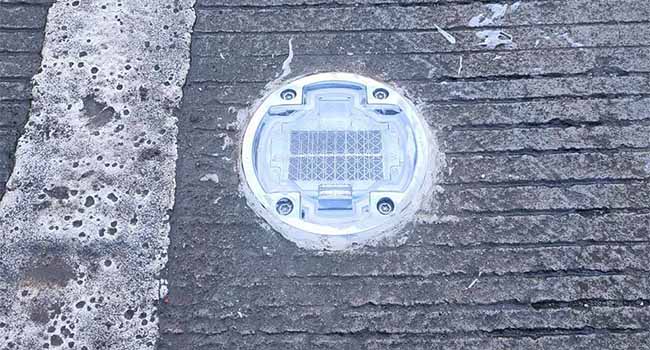
Chemical Resistance and High-Temperature Performance
AB adhesive demonstrates excellent resistance to various chemical substances, including common acids, alkalis, and solvents, which do not cause significant corrosion. Additionally, it can withstand high-temperature environments, maintaining stable performance even under high-temperature conditions without performance degradation due to temperature changes. Therefore, AB adhesive is particularly suitable for applications in industrial equipment, engines, and other scenarios exposed to complex chemical environments and high-temperature conditions.
Simple Equipment
Using AB adhesive does not require complex equipment; only simple mixing tools are needed to complete the operation. Furthermore, its curing process does not rely on high-temperature conditions, reducing dependence on heating equipment during production and construction. This not only saves on the cost of purchasing related equipment but also reduces energy consumption, thereby lowering production costs from multiple angles.
Limitations of AB Adhesive
Although AB adhesive has significant advantages, it also has certain limitations in practical applications. For example, once bonding is complete, due to the stable polymer network structure formed after curing, rework is difficult, and forced disassembly may damage the bonded materials. The mixing ratio must be precise; even minor deviations can disrupt the chemical reaction process, leading to inadequate curing or significantly reduced performance. During use, improper mixing or other factors may also cause bubbles, creating weak points in the bond and severely affecting bonding effectiveness. Therefore, selecting and using AB adhesive correctly, fully understanding its characteristics, and strictly adhering to operational guidelines are particularly critical.
Why is AB Glue Essential for Solar Road Studs?
The Harsh Operating Environment of Solar Road Studs
Solar road studs are exposed to outdoor environments for extended periods, facing complex and harsh environmental challenges. During summer, temperatures can reach above 50°C, and prolonged high temperatures can accelerate material aging and impair the performance of electronic components. In winter, temperatures may drop as low as -20°C or even lower, with low temperatures causing materials to become brittle and reducing seal integrity.
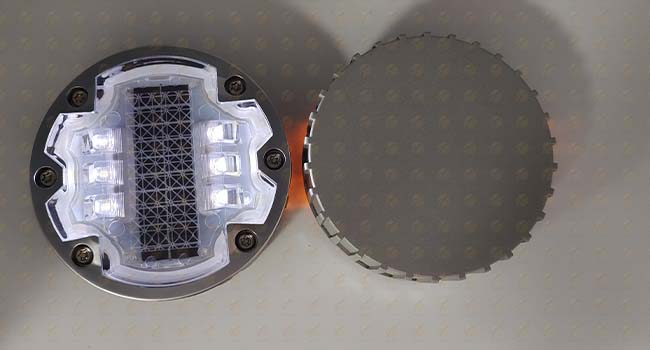
Additionally, they must withstand heavy rain, which may cause water ingress and short circuits; prolonged exposure to ultraviolet radiation, which can cause the outer casing to fade and become brittle; and frequent vehicle crushing, resulting in heavy traffic loads. Under such conditions, solar road studs must possess extremely high stability and durability to function reliably over the long term.
The Critical Role of AB Adhesive
Strong Adhesion: The components of solar road studs are made of different materials. AB adhesive, with its excellent bonding performance, can securely bond metal housings, plastic components, internal electronic components, solar panels, and housings. Even under complex environmental conditions such as extreme temperature fluctuations and road vibrations, it ensures that all components remain securely connected, preventing loosening or detachment that could affect the normal operation of the road studs.
Waterproof Sealing: Rainwater and road surface water can easily penetrate the interior of the road stud. AB adhesive precisely fills gaps to form a dense waterproof barrier, completely isolating electronic components from external moisture. This effectively prevents issues such as short circuits and component corrosion caused by water ingress, ensuring the road stud continues to operate stably in humid and rainy environments.
Enhanced Durability: High-quality AB adhesive forms a resilient polymer structure after curing, capable of withstanding UV radiation, acid-alkali corrosion, and damage from high-low temperature cycles. This robust connection significantly enhances the overall durability of the track fastener, extending its service life by over 30% and significantly reducing the labor and economic costs associated with frequent maintenance and replacements.
Impact Resistance: When a vehicle rolls over a track spike, it generates immense impact force. AB adhesive acts as a cushioning layer, utilizing its excellent elasticity and strength to quickly disperse stress and prevent stress concentration from damaging the track spike. Even when subjected to repeated crushing by heavy vehicles, it maintains structural integrity and preserves the track spike's core functions such as illumination and warning.
Severe Consequences of Improper Use
If the wrong type of AB adhesive is selected or the mixing ratio is incorrect, it will lead to a series of serious issues. For example, the adhesive may fail to adapt to temperature changes, causing cracks at the bonding points and affecting waterproof performance. Insufficient bonding strength may result in component loosening or even detachment. Internal electronic components may be damaged due to lack of effective protection, ultimately causing the solar road stud to malfunction.
AB Glue Selection for Solar Road Stud Materials
Aluminum Solar Road Studs
Challenges: Aluminum materials have significant thermal expansion and contraction properties, causing their dimensions to change with temperature fluctuations. This places extremely high demands on the adhesive's bonding stability. If the adhesive cannot adapt to these changes, cracks are likely to form at the bonded joints, leading to a decline in stud performance.
Key Considerations for Adhesive Selection: For aluminum solar road studs, an AB adhesive with excellent flexibility and adaptability must be selected. This allows the adhesive to deform in tandem with the thermal expansion and contraction of the aluminum material while maintaining sufficient bonding strength to prevent cracks from forming.
Stainless Steel Solar Road Studs
Challenges faced: Stainless steel surfaces are non-porous and highly corrosion-resistant, making it difficult for ordinary adhesives to achieve effective bonding. Additionally, stainless steel is a heavy material, requiring higher load-bearing capacity and bonding strength from the adhesive.
Key considerations for adhesive selection: AB adhesives suitable for stainless steel solar road studs must possess high bonding strength to overcome the surface characteristics of stainless steel and achieve a secure seal.
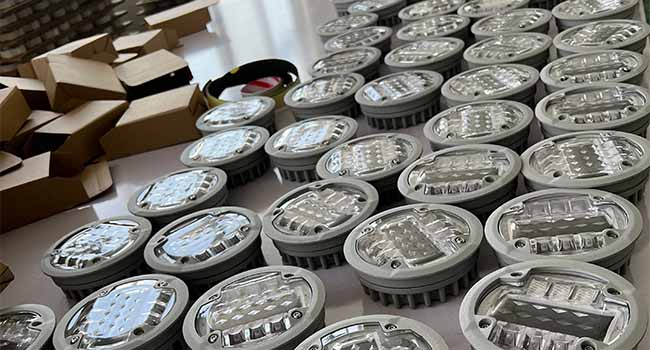
AB Adhesive Applications in Solar Road Stud Manufacturing
Sealing Electronic Components
In the sealing of electronic components for solar road studs, AB adhesive plays a crucial role. Its primary function is to ensure long-term waterproofing, preventing moisture, dust, and debris from infiltrating and safeguarding the normal operation of internal circuits. Through precise application and curing, AB adhesive forms a robust protective layer on the surface of electronic components, ensuring the stable operation of the road studs.
Installation of Solar Road Studs on the Ground
AB adhesive used for ground installation differs from that used for sealing electronic components. Installation-grade AB adhesive must have higher viscosity and elasticity to ensure the studs are securely fixed to the road surface. Road environments are complex and variable, subject to long-term stress from vehicle crushing, temperature fluctuations, and other factors. High-viscosity AB adhesive can quickly adhere to the road surface, forming strong bonding force; its elastic properties can absorb minor movements caused by temperature fluctuations and traffic pressure, preventing the studs from loosening due to road surface changes. During actual installation, strictly following operational guidelines and using the appropriate AB adhesive is crucial to ensuring the quality of solar road stud installation. Otherwise, issues such as stud detachment or displacement may arise, posing risks to road safety.
Selecting the appropriate AB adhesive is of critical importance for solar road studs. From the basic properties of AB adhesive to its key role in various application scenarios for solar road studs, it is evident that proper adhesive selection is the core element in ensuring the performance, durability, and safety of road studs. Solar road stud manufacturers should place significant emphasis on adhesive selection, combining road stud materials and application scenarios to make informed decisions, thereby enhancing product quality, strengthening market competitiveness, and providing more reliable safeguards for road safety.

